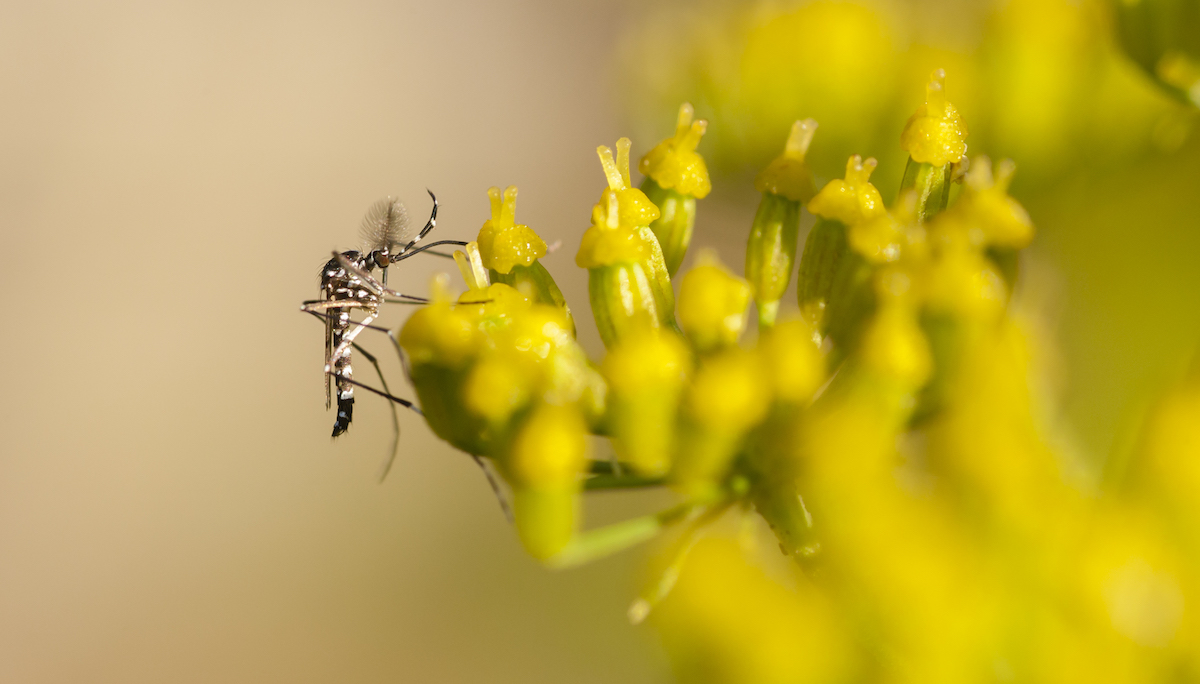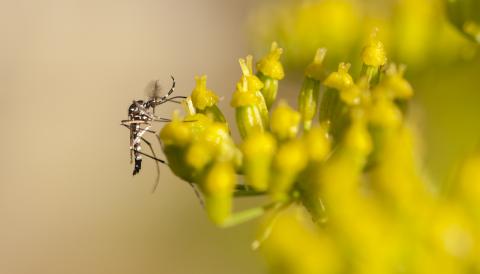Mosquito-borne Diseases in the Valley: a Recap
Mosquito-borne Diseases in the Valley: a Recap

The November 7 evening event "Mosquitoes-borne in the valley" organized by Silvie Huijben sold out; for those of you who couldn't attend, here are the highlights.
in addition to Silvie, we heard from, Kirk Smith, in the Vector Control Division of the Maricopa County Environmental Services Department, Irene Ruberto, from the Arizona Department of Health Services Office of Infectious Disease Services, and Crystal Hepp, from the School of Informatics, Computing and Cyber Systems at Northern Arizona University. One big conclusion from the evening is that Maricopa County has amazing scientific sophistication in vector surveillance!
West Nile virus is the big problem, now spreading with a neural invasive strain that is causing encephalitis and meningitis, sometimes leaving infected people paralyzed, and causing 5 to 10 deaths in Arizona most years (for more information and data on mosquito-borne diseases in Arizona please visit this ADHS website). There was hope it might be a transient problem, but it seems to have settled in, probably with a reservoir in some bird population, yet to be identified. Culex is the vector for this virus and St. Louis encephalitis.
Zika, dengue, and chikungunya are transmitted by Aedes, ankle biters that are now not just endemic but overwhelmingly common in the valley. The three flaviviruses they transmit have not yet been identified in mosquitoes in the valley; human cases have so far all been in travelers. Zika, is of special concern, given around 100 cases reported so far this year in Sonora, Mexico. There was a good discussion about why these diseases have not established and spread here. One speculation is that the hot dry climate shortens mosquito lifespans so that few survive long enough after they become infected to be capable of transmitting the disease…making rains in cool fall weather of particular concern
The Maricopa county surveillance program is amazing, with traps routinely placed and checked in locations across the valley. Since the recent rains, some single traps have had up to 80,000 mosquitoes! Samples of 50 at a time are analyzed to look for genetic signatures of viral diseases. Crystal Hepp showed a dramatic time-lapse movie documenting the spread of West Nile across the valley. She also noted that it's possible to use the data to track virus evolution, a great research opportunity.
Fogging and public sanitation of pools and drainage channels are the main interventions. However, mosquitos in the valley have already developed resistance to malathion because of extensive use here in recent years. The EPA is likely to withdraw approval for several other effective agents, so there is concern about ability to respond in coming years. Scores of separate towns and cities in the Phoenix area each have their own regulations and difficulties dealing with standing water. Abandoned swimming pools can breed thousands of mosquitoes each night, but it takes a search warrant to do anything about some of them.
Evolutionary strategies for minimizing insecticide resistance are under discussion, but lack of novel insecticides with different modes of action result in limited options for evolutionary management. Minimizing use, and adjusting timing of use, and decisions about matrix application all offer opportunities. Also, the extreme climatic environment these mosquitoes are exposed to might lead to bigger-than-normal fitness costs associated with resistance, that could perhaps be harnessed. With new insecticides coming on the market, it might even be possible to mount a controlled study with different strategies in different areas.
In addition to the pleasure of hearing about all these projects and findings, several people discovered mutual connections and new research opportunities, so our goal was accomplished and then some. Your suggestions for future event sponsored by the Arizona Evolution and Medicine Alliance are welcome.


